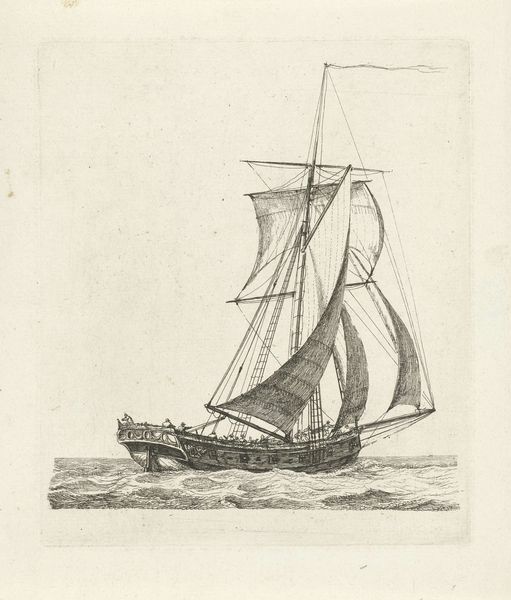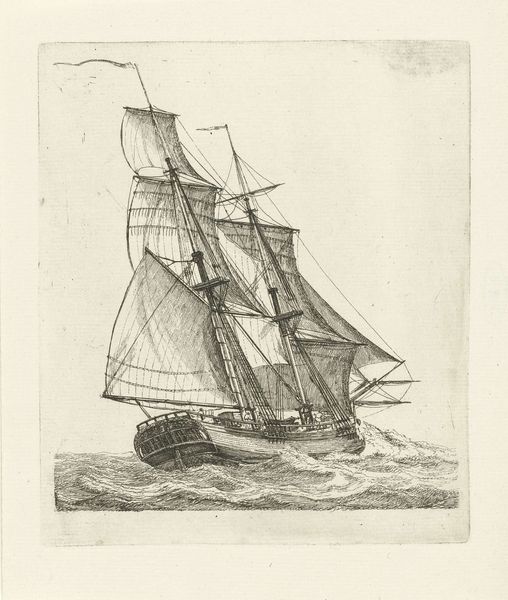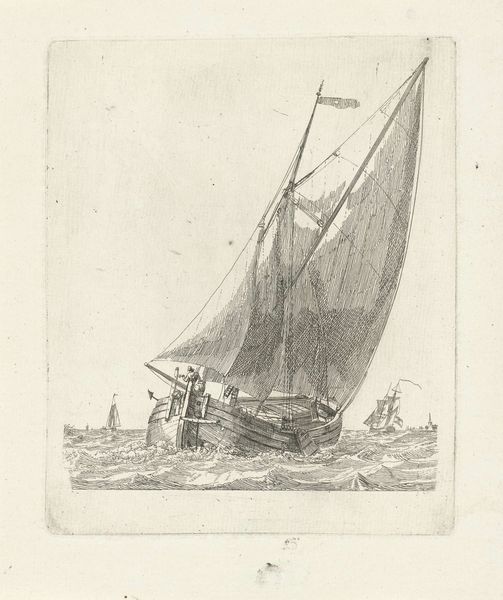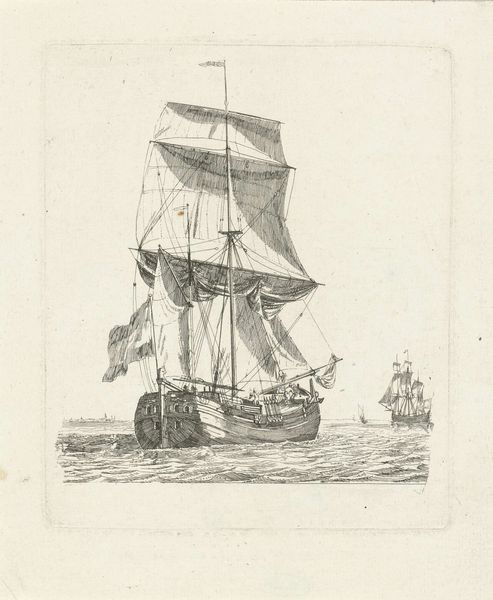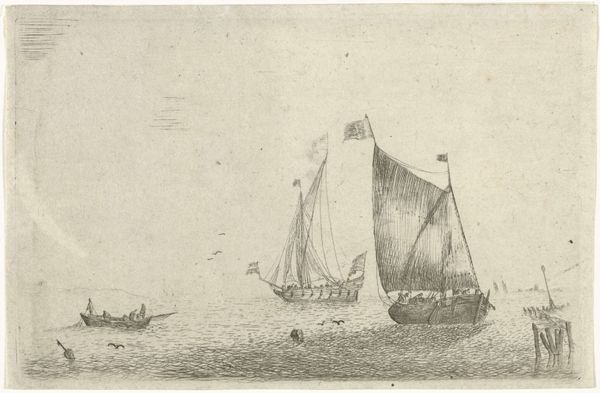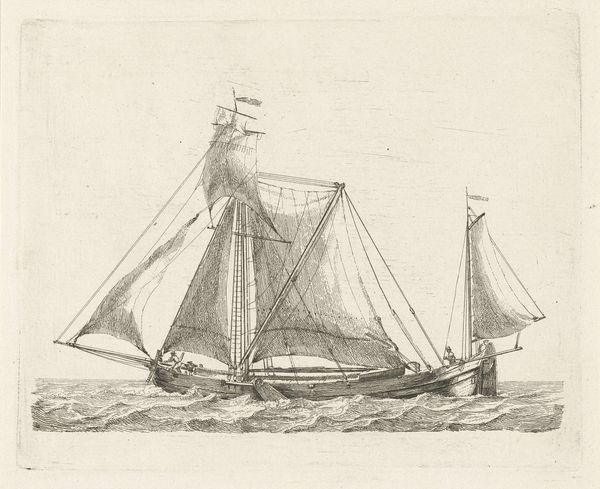
Dimensions: height 129 mm, width 152 mm
Copyright: Rijks Museum: Open Domain
Editor: This is "Zeilschip met drie vlaggen" by Gerrit Groenewegen, created in 1790. It's a print – an engraving or etching, perhaps – and it has a real sense of movement and detail despite the limited tonal range. What resonates most with you in this image? Curator: The flags immediately catch my eye. Notice how prominently they’re displayed. Each one is a carefully chosen symbol, a visual shorthand communicating power, allegiance, and perhaps even trade relations. The artist knew exactly the cultural weight they carried. Do you see how the ship is adorned? Editor: Yes, quite ornate! What does the decoration signify? Curator: Exactly! These weren't merely aesthetic choices; they spoke to the owner's status and aspirations. The elaborate carvings acted as emblems, signaling wealth and influence. Now, consider the ocean itself – turbulent yet navigable. Water, across cultures, often represents both chaos and opportunity. Editor: So, it's not just a pretty picture of a ship. Curator: Not at all! This is a vessel laden with meaning. What do you think viewers at the time would have felt seeing this image? How did these symbols and iconographies inform their world view? Editor: I guess they would feel proud, or at least connected to that power and trade you mentioned. Thanks for pointing out all the layers – I’ll definitely look at art differently now! Curator: My pleasure. The beauty lies in understanding how artists embed such deep, enduring meaning into their work.
Comments
No comments
Be the first to comment and join the conversation on the ultimate creative platform.


